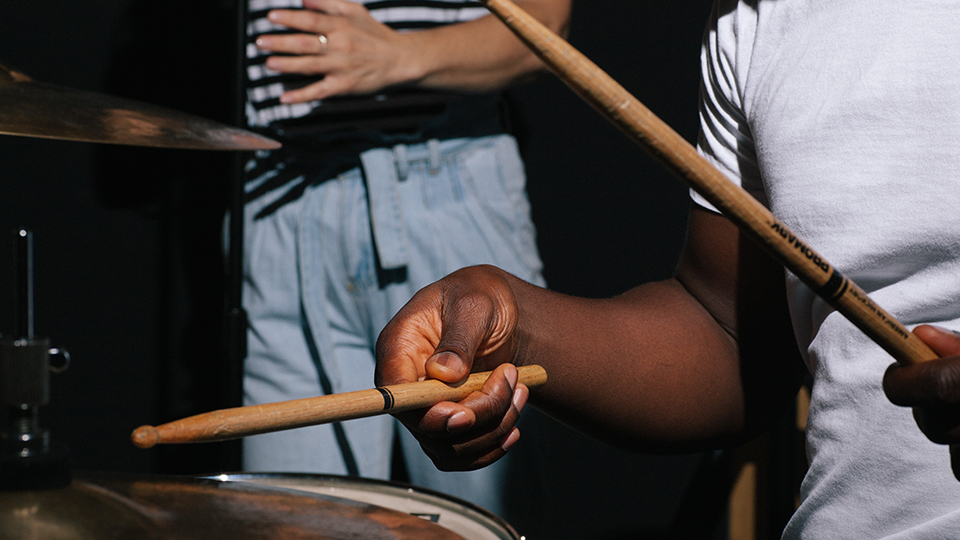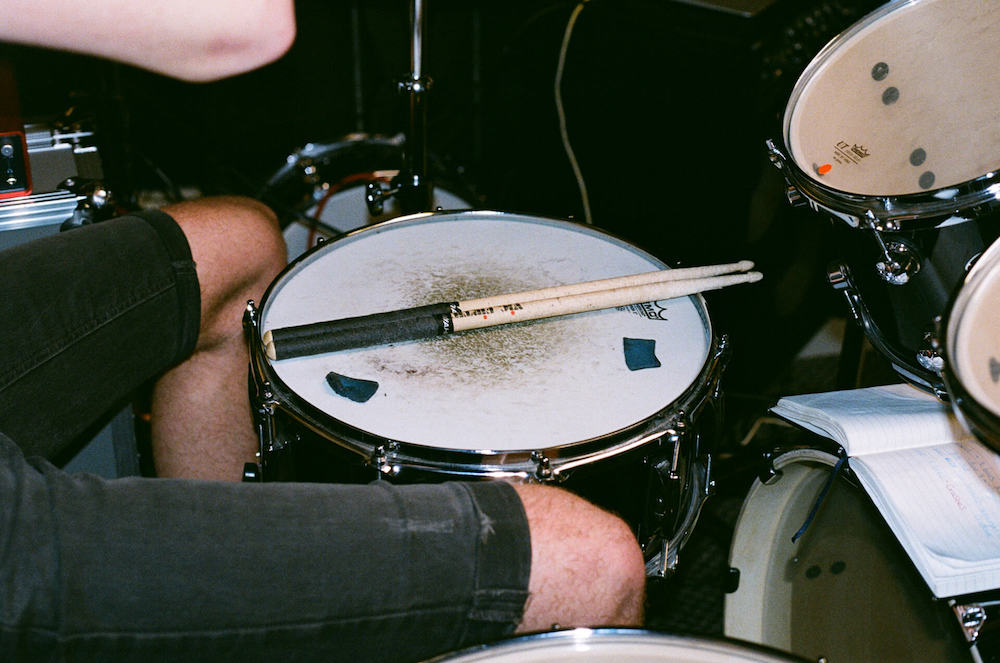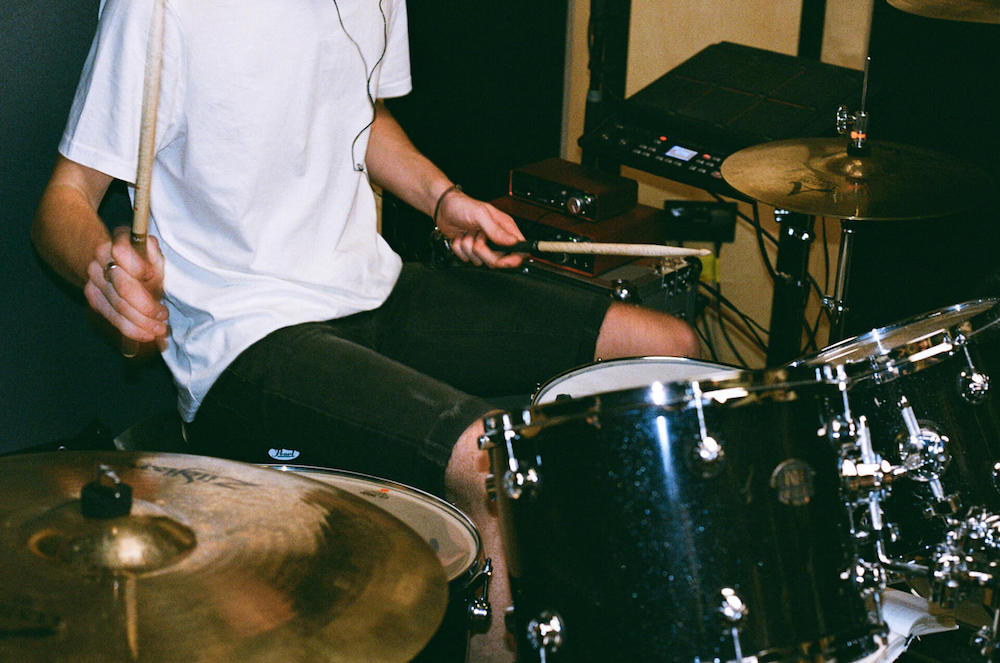
■ Features
Jaleesa Gemerts (Lady Groove) is a music producer, drum instructor and performer who earned her stripes recording with the likes of George Ezra. She’s also a regular in the Pirate Dalston drum studios where she rehearses and teaches drum lessons.
In this article, Jaleesa covers the 5 essential drum rudiments for beginners: single stroke, double stroke, paradiddle, three stroke and flam.
To hone your skills as a band, producer, DJ or dancer, book a Pirate.com studio in the UK, US or Germany now.

Rudiments are an important part of any drummer's vocabulary. Once you know them, they’ll help you express yourself behind the kit. There are 40 essential drum rudiments but to start, I’m going to teach you the 5 most important.
Once you know these 5, theoretically, you should be able to play all 40.
If this is your first time playing the drums, it's worth learning how to hold your drumsticks correctly first. My tutorial on how to hold your drumsticks correctly can be found on the Pirate blog.
Assuming you have a drumstick in each hand, I’m now going to run through how to play drum rudiments.

The single stroke rudiment is: right, left, right, left, right, left.
This can be played at any speed. I’d recommend practicing it slowly at first and then trying to speed up. I also find it helps to practice drumming to the beat of a metronome or to a song.
The double stroke rudiment is: right, right, left, left, right, right, left, left.
The double stroke rudiment is commonly used for the classic drum roll, also known as the 'double stroke roll'. Again, play it at any speed to begin with. Then, once you're more comfortable, play it a bit faster, then even faster.
The paradiddle rudiment is: right, left, right, right, left, right, left, left.
One way to remember this is by breaking up the word ‘paradiddle’ like this: pa-ra-diddle. Think of ‘pa’ and ‘ra’ as single beats, and ‘diddle’ means a double beat.
The three stroke rudiment is: right, right, right, left, left, left.
That’s three beats in each hand. Again, you should try practicing these slowly, then build up as much speed as you can.
The final rudiment that I’ll be showing you is the flam. This one is a little more complicated than the others we’ve covered so far.
What is a flam stroke?
A flam is when you have a grace note, which means a quieter note right before an accent. You need to use one hand to play your grace note and the other to play the accent.
Grip
The hand that's playing the grace note should be a lot lower than the hand that's playing the accent. However, where you grip your sticks will also change dependent on how fast you're playing. When you play your accent slowly, your hands will be a lot higher. When you play them faster, your hands will be lower.
How to play the flam
You need to make sure that you don't play the two notes too close together. Otherwise, you’ll find your two notes sound like one note which you don't want. However, you also need to make sure that your two notes aren’t being played too far apart.
To recap: the grace note is played quieter and it's held lower than your accent.

Practicing regularly is key to mastering any instrument. If you don't have a drum practice room at home, you can book a drum practice studio at Pirate in the UK, US, Germany or Ireland.
Once you've mastered these 5 basic drum rudiments, you can begin learning the rest of the 40 essential rudiments. I'd recommend doing this in batches. For instance, once you know 5 rudiments off by heart, you could add another 2 to your practice routine, then you'll know 7 essential rudiments. The next time you practice, you might want to try 13 essential rudiments, then 26 essential rudiments and so on. Eventually, you'll build up to playing all 40 rudiments all the way through.
As I said at the beginning, the rudiments are a very important part of your drumming vocabulary. Spend some time behind the kit, play around with them and try them out on different drums. You might find you love snare rudiments, playing rudiments on toms or even hybrid snare rudiments.
I promise, once you get started, you'll find it's really fun.